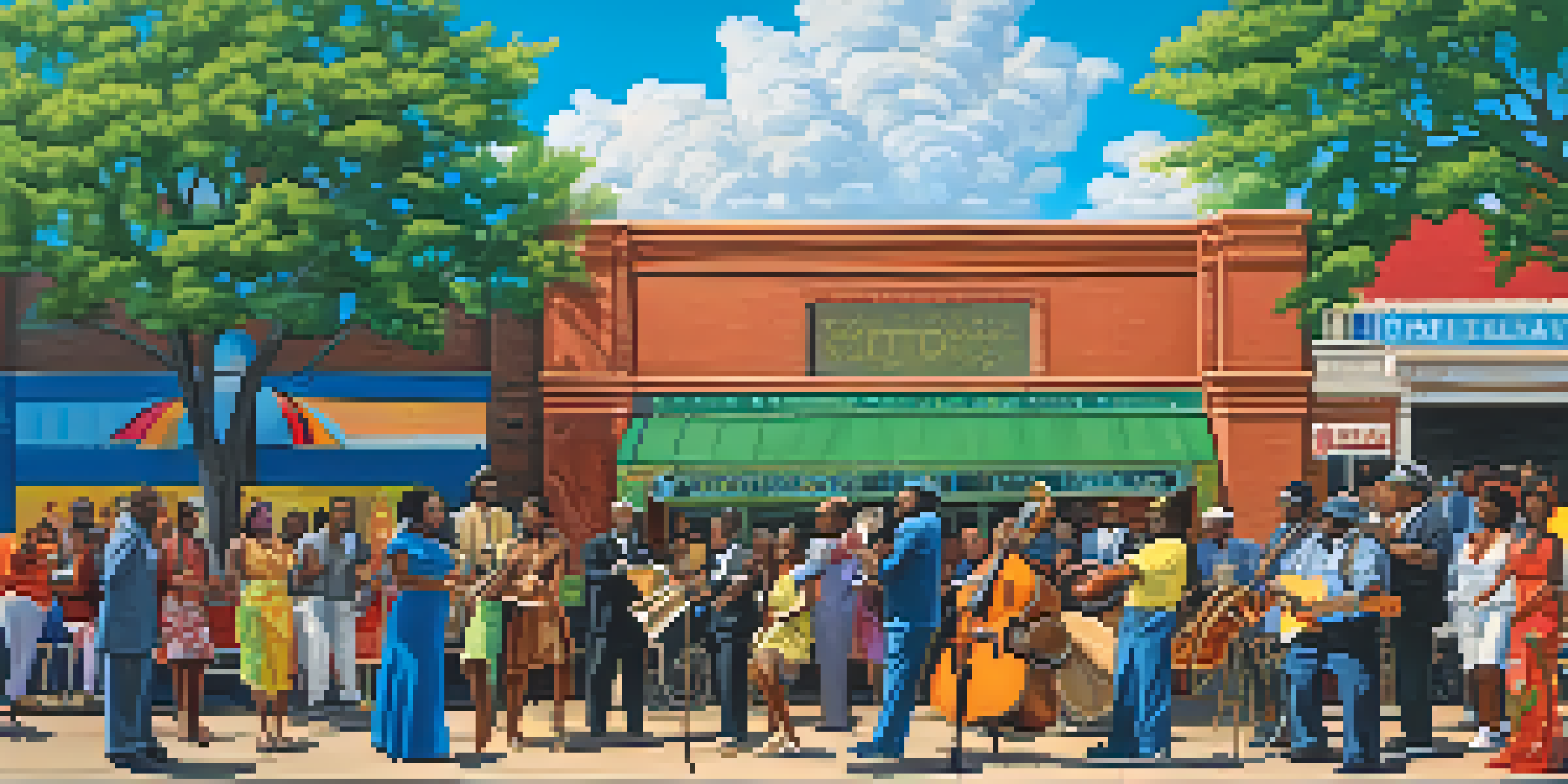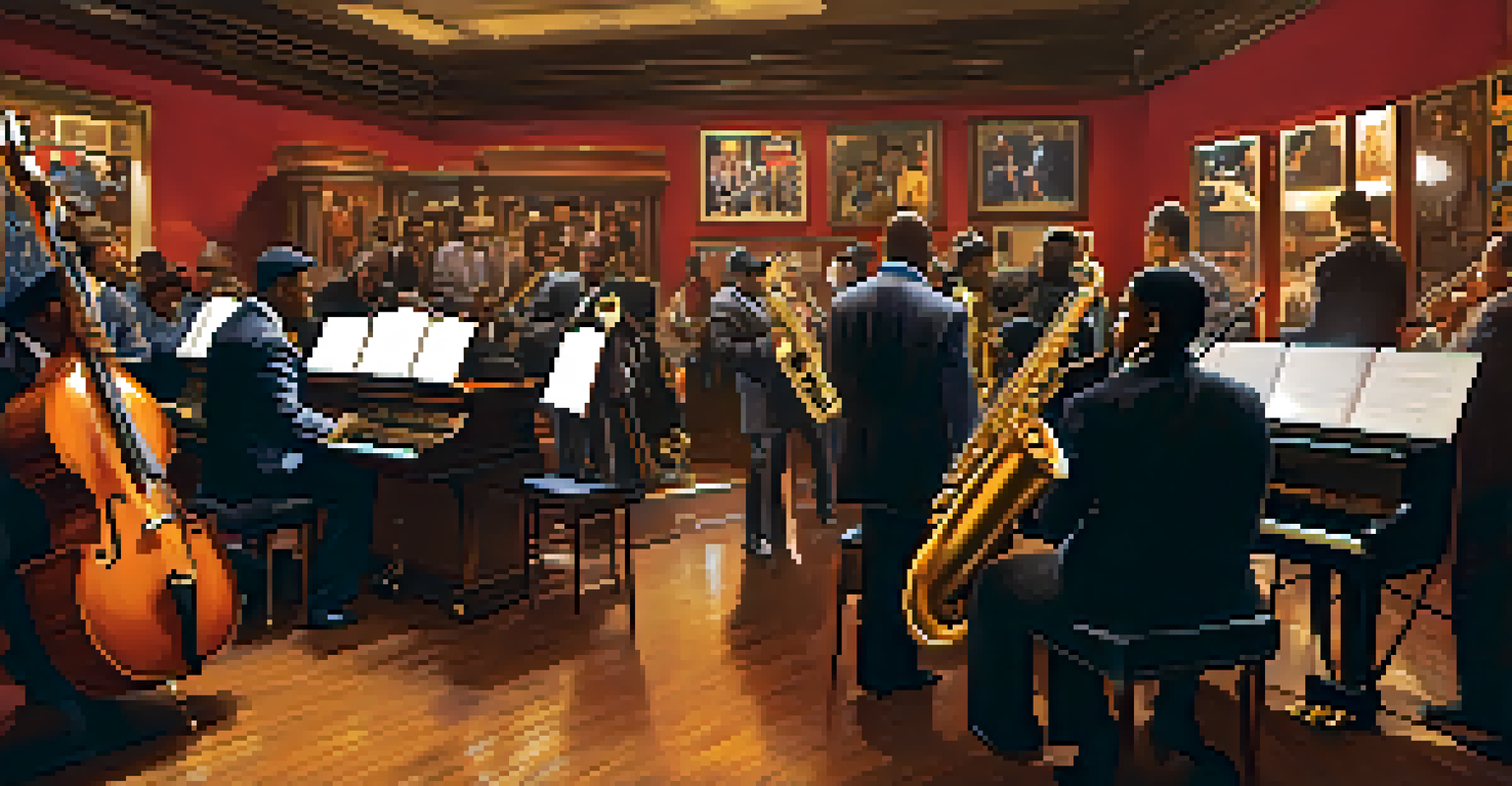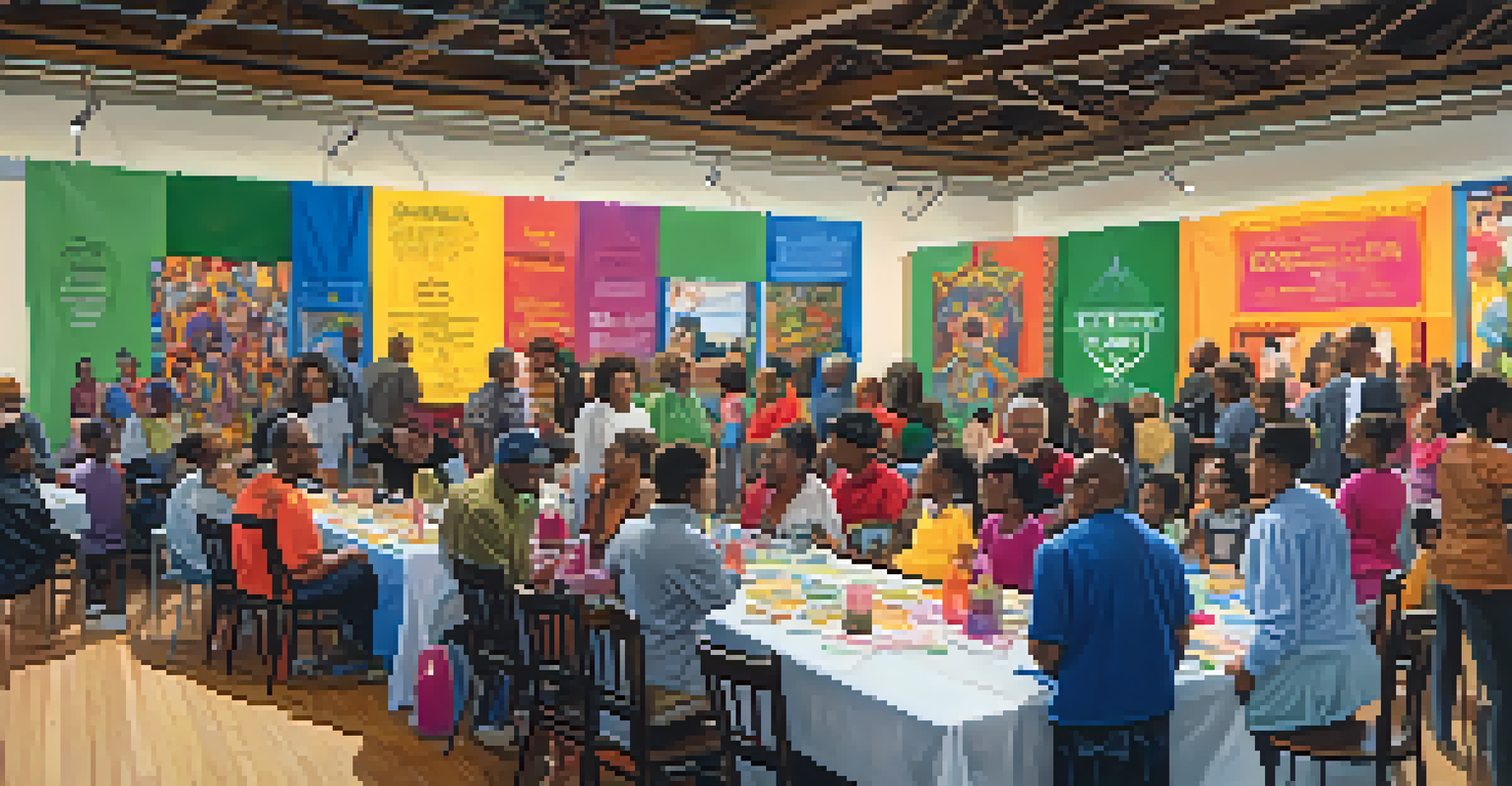Buffalo's African American Culture: A Historical Overview

The Roots of African American Culture in Buffalo
Buffalo's African American culture has deep roots that date back to the 19th century. Many freed slaves and African Americans migrated to the city, drawn by the promise of industrial jobs and better living conditions. This influx played a critical role in shaping the city's demographic and cultural landscape.
Injustice anywhere is a threat to justice everywhere.
In the early days, African Americans faced significant challenges, including discrimination and limited opportunities. Despite these hurdles, the community began to establish its own social networks, churches, and businesses, which became vital for support and resilience.
The establishment of the Michigan Street African Methodist Episcopal Church in 1836 stands as a testament to this early community spirit. It served not just as a religious center, but also as a hub for social activism and cultural exchange.
The Great Migration and Its Impact on Buffalo
The Great Migration, which occurred from the 1910s to the 1970s, saw millions of African Americans moving from the rural South to Northern cities, including Buffalo. This migration significantly transformed the city's cultural fabric, as new arrivals brought diverse traditions and experiences.

In Buffalo, neighborhoods like the East Side became vibrant centers of African American life. With an increase in population came the establishment of schools, clubs, and cultural organizations that celebrated African American heritage and fostered community solidarity.
Historical Roots of Buffalo's Culture
Buffalo's African American culture has deep historical roots that began with the migration of freed slaves and African Americans in the 19th century, shaping the city's cultural landscape.
However, this period was not without its struggles. Many migrants faced racial segregation and economic disparities, prompting a strong sense of activism that would shape Buffalo's civil rights movements in the following decades.
The Harlem Renaissance's Influence on Buffalo
The Harlem Renaissance, a cultural and artistic explosion in the 1920s, had a profound impact on Buffalo's African American community. Artists, writers, and musicians from this movement inspired local talent to express their creativity and share their stories.
The time is always right to do what is right.
Buffalo became a stage for jazz and blues, with venues like the Colored Musicians Club serving as a safe haven for artists. This club not only showcased local talent but also welcomed renowned musicians, fostering a rich musical heritage that continues to influence the city today.
This era also sparked a renewed interest in literature and education among the African American community, as individuals sought to elevate their cultural identity through artistic expression and intellectual pursuit.
Civil Rights Movement in Buffalo: A Local Perspective
The civil rights movement of the 1960s brought significant changes to Buffalo, as activists fought against racial injustice and inequality. Local leaders, inspired by national figures, organized protests, marches, and community meetings to address issues like housing discrimination and educational disparities.
Organizations such as the Buffalo Urban League played a crucial role in advocating for policy changes and providing resources to the African American community. These efforts were instrumental in raising awareness and mobilizing support for civil rights initiatives.
Impact of the Great Migration
The Great Migration brought millions of African Americans to Buffalo, transforming neighborhoods and fostering community solidarity despite facing significant challenges.
As a result of these collective actions, Buffalo saw gradual improvements in civil rights, although challenges remained. The legacy of this activism continues to resonate today, reminding us of the ongoing struggle for equality.
Modern Contributions: Arts and Culture
Today, Buffalo's African American community continues to thrive, contributing richly to the city's arts and culture. Events like the Buffalo African American Cultural and Heritage Facility highlight the achievements of local artists and promote cultural education.
The arts scene is vibrant, with numerous organizations dedicated to showcasing African American talent in music, theater, and visual arts. Festivals celebrating African American culture, such as Juneteenth, have also gained prominence, drawing diverse audiences and fostering community pride.
These contributions not only enrich Buffalo's cultural landscape but also serve as a platform for dialogue and understanding among various communities, reinforcing the importance of inclusivity.
Challenges Facing Buffalo's African American Community Today
Despite the progress made over the years, Buffalo's African American community still faces significant challenges. Issues like economic inequality, access to quality education, and systemic racism continue to impact the quality of life for many residents.
Community leaders and organizations are working tirelessly to address these issues through various initiatives aimed at enhancing economic opportunities and educational resources. Collaboration between local government and community groups is crucial for fostering long-term change.
Ongoing Challenges and Future Vision
Despite progress, Buffalo's African American community continues to confront challenges like economic inequality and systemic racism, while young leaders are driving initiatives for a more equitable future.
Raising awareness about these challenges is vital, as it encourages dialogue and action within the broader Buffalo community. Recognizing and addressing these issues will pave the way for a more equitable future.
Looking Ahead: The Future of African American Culture in Buffalo
As we look to the future, Buffalo's African American culture is poised for continued growth and evolution. Young leaders and activists are stepping up, bringing fresh perspectives and innovative ideas to the forefront of community initiatives.
The preservation of African American history and culture is also a priority, with efforts to document and share stories that highlight the community's contributions. These narratives not only celebrate the past but also inspire future generations.

Ultimately, the future of Buffalo's African American culture will depend on the community's resilience and commitment to social justice. By embracing their heritage and advocating for equity, they will continue to shape the city's identity for years to come.